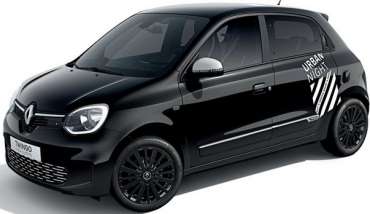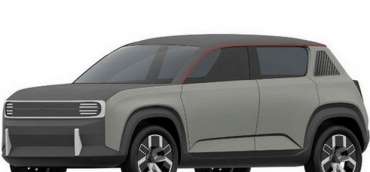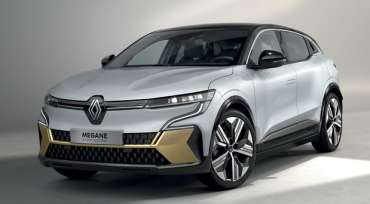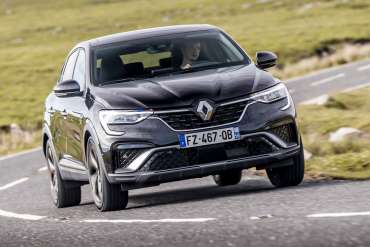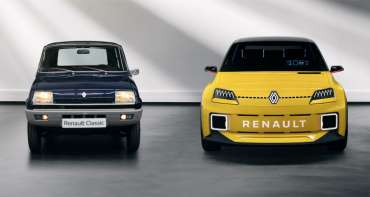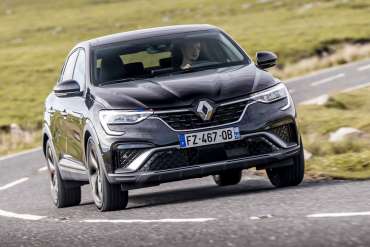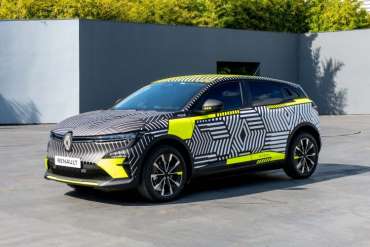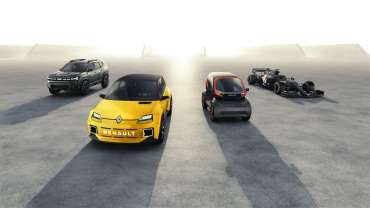Displaying items by tag: Renault
New Renault Megane E-Tech 2022 review
The Renault Megane returns as an all-electric SUV, and is all the better for it
Verdict
Renault has moved with the times with the new Megane, and the switch to full-electric power makes it one of the most convincing models to wear the badge since its debut 27 years ago. It’s spacious, accomplished to drive and has the best in-car tech in its class. There are some minor flaws – improved efficiency would be welcome – but it has fewer than most rivals. If you’re looking for a family EV, the Megane must be on your shortlist.
The Renault Megane is one of those cars that have become part of the establishment within the automotive landscape. The name is among the most recognisable in the family car class, having been on our roads since 1995; only the Volkswagen Golf, Honda Civic, Toyota Corolla and Vauxhall Astra are longer-serving badges in this segment.

It’s a big deal, then, when a new Megane comes out. It’s an even bigger deal when the car that Renault releases represents such a radical departure from what went before it. And despite what you might think when you see the dramatic new crossover’s proportions, we’re not talking about the design. That’s because the most significant change here is that the fifth-generation Megane is all-electric.
Under the skin, it uses the CMF-EV platform, which is the same tech as our Car of The Year, the Nissan Ariya. However, the Megane uses a different motor, made in France by Renault, which in UK-spec models produces a healthy 217bhp. There are no rare earth metals in the motor, and when that’s combined with the 20kg of recycled material that’s used in every Megane – including plastic bottles for the seat upholstery – the car’s sustainability credentials are boosted.

Energy is supplied by a super-slim 60kWh battery, which results in a cabin space that’s similar to a Volkswagen ID.3’s. That means it’s acceptable, but still a little tight in the rear. At 440 litres, the deep boot is generous, although there is a load lip.
The interior feels miles ahead of the VW’s, though. Quality is a step up on its rival, but it’s the ergonomics that really set it apart. The Megane has proper physical controls for the climate functions, for a start.
One of the areas that Renault is most proud of is the Android Automotive-based infotainment system. It claims that the screen sharpness is class-leading, and that the system is as responsive to use as a smartphone. It’s a fair claim – touch response and loading times are excellent, while “Okay Google” voice commands can be used not only for route guidance, but also to adjust the drive modes and ambient lighting. This is one of the very best in-car systems on the market, and Renault says that there’s more to come, too; future over-the-air updates will bring further improvements and additional functionality.
The Megane is also impressive on the road. Refinement is its strongest point, with wind and road noise plus suspension knocks well isolated from the cabin. The Megane’s driving dynamics are above average for the class, but despite quick steering and a kerbweight that undercuts most rivals, it’s still a 1,636kg hatchback.

The car’s weakness is its low-speed ride. The chassis never quite settles over uneven surfaces, causing a constant fidget. It’s never harsh, though, and larger bumps are rounded off nicely. Performance is strong, too, with 0-62mph taking 7.5 seconds. Normal mode is best; in Sport the throttle response feels a little too sharp.
There are four levels of brake regeneration to choose from, which can be easily adjusted via steering wheel paddles. When energy recovery is operating, it automatically depresses the brake pedal. This is supposed to be clever, but in reality it feels odd.
A mix of twisty B-roads, motorways and some town driving resulted in efficiency of 3.7 miles per kWh on our test drive, and an estimated real-world range of around 230 miles, well short of the official 280-mile claim. However, if you mainly do urban driving, you can expect much better.
Renault is keeping the Megane line-up simple, with a single powertrain and three trim levels. Beyond the colour, there are no optional extras to add to any of them.
The range kicks off with the £35,995 Equilibre, which gets a 12.3-inch driver display, rear parking sensors and camera, a heated steering wheel, adaptive cruise, traffic sign recognition and USB-C ports. However, it misses out on the Google-based infotainment, which is standard on £38,495 Techno models. This trim also adds front parking sensors, wireless phone charging, blind-spot warning and active lane centring.
Launch Edition is the current range- topper and gets 20-inch wheels and a gold front bumper insert. Inside, there’s a digital rear-view mirror, a nine-speaker Harman Kardon audio system and a surround-view parking camera. At £39,995, it’s much less than a top-spec Cupra Born.
The main challenger for the Megane will be the MG4. It feels cheaper than the Megane in several areas, but costs less, so it’s easy to forgive these shortcomings – ironically something often noted about Renault’s budget brand, Dacia.
Source: autoexpress.co.uk
Renault presents the successor to the legendary "four" at the Paris show
Brands operating within the Renault company will exhibit as many as six novelties at the Paris Motor Show, which begins on October 17.
Among the announced premieres will be the Alpine concept, which heralds "a new phase in the transformation of the brand", according to the announcement. The production version of this car will arrive in 2025.
The revived legendary Renault 4 will also debut in Paris. The company announced that this time it is an electric model.
Apart from the use of electric drive, there are no details available about the new "four". As a reminder, the original was one of the best-selling models of its time, with over eight million units produced between 1961 and the early 1990s.
A new version of the modern Renault 5 concept will also be in Paris. The original concept of this vehicle (pictured) is from January 2021, but there is speculation that the new variant could be different.
Dacia has not yet commented on its plans for the Paris Motor Show. The company says that it will present the "final phase in the transformation of its visual identity" at the salon, which includes the new, recently unveiled logo.
There is no information yet on whether a new vehicle of the Romanian brand will be shown at the fair.
Renault Twingo Urban Night
A new special edition of their small city model Twingo is coming from Renault.
Twingo Urban Night is only available in France, in petrol and electric versions, as well as with a choice of four colors: Cristal White, Quartz White, Moon Gray and Diamond Black.
The package also includes 16-inch black wheels, graphics on the door, roof and C-pillar, mirrors with Urban Night X logo, Urban Nigh X inscription on the front panel, special sills, bright black interior details, black seats with white accents, navigation , rear camera, wireless charging ...
Twingo Urban Night in France starts at a price of 17,300 euros for the petrol version and 26,650 euros for the fully electric variant.
Renault 4ever more premium positioned compared to Renault 5 EV
Renault 4ever will be launched in 2025 as a compact crossover with increased ground clearance, "blood" connected to the new Renault 5, which will debut a year earlier. Since the "premium" will be positioned in terms of price, it will not have much to do with the former, popular "four".
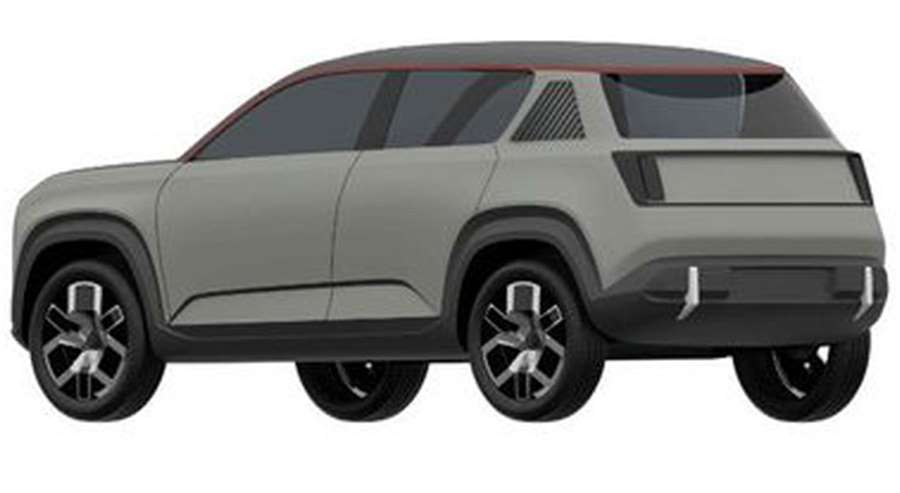
The original Renault 4 was produced from 1961 to 1994, while the newcomer will rest on the same CMF-BEV platform for small cars as the new "five", in relation to which it will be more priced. Renault executives have previously suggested that the hatchback will be in the range between 21,500 and 24,500 euros, depending on the cost of raw materials in 2024.
The head of the company, Luka de Meo, confirmed the plans that have been "whispered" for a long time, related to the "resurrection" of Renault 4. While the new "five" is conceived as a sports hatchback, 4ever will take the form of a compact crossover. In both cases, it is about retro styling, which customers will definitely like, write Vrele Gume.
4ever will be one of 10 new electric cars that Renault plans to launch by 2025. The French company intends to make up to 90 percent of its European sales purely electric by 2030. Both Renault 5 and 4ever will benefit from new battery and electric motor technology developed by Renault Group , which will help reduce costs associated with small electrical models. Renault claims that the technology applied on the CMF-BEV platform will reduce the cost of the "five" by 33 percent compared to Zoe.
Meanwhile, the French manufacturer has confirmed that the performance subsidiary, Alpine, will launch its first EV 2024, while the CMF-BEV architecture will also be used for Renault’s new electric van. De Meo also confirmed that Zoe will stop being produced in 2024. For now, there is no direct successor, although it is clear that 4ever and 5 will fill that market niche.
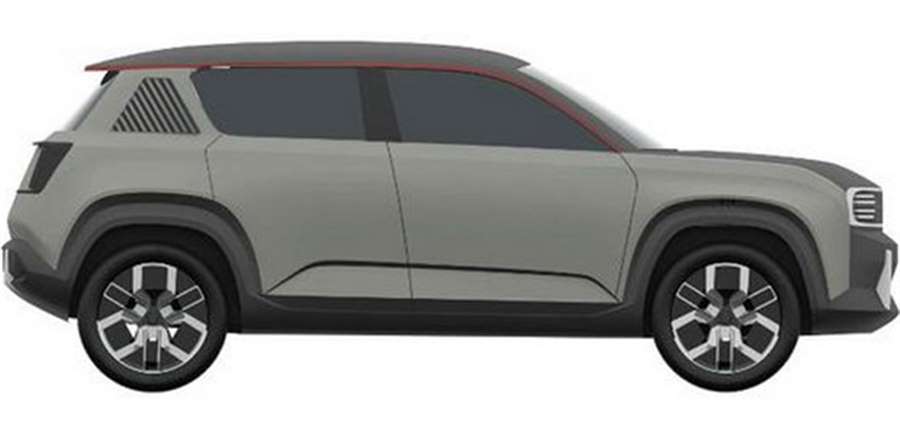
Renault focused on new battery and engine technology
The goal of the French conglomerate is to achieve sales that will consist of 90% of electric vehicles by 2030. This will require the production of about a million electric cars by then, both on the CMF-BEV and the larger CMF-EV platform, on which the Megane E-Tech Electric and Nissan Ariya rest.
Renault Group will centralize the production of electric vehicles in the "ElectriCity" complex, which includes three factories in northern France, and a partnership has been agreed with Envision AESC, regarding the construction of a battery factory, which will start operating in 2024, with an annual capacity of 9 GWh. with a plan to increase it to 24 GWh by 2030.
In addition, Renault will work with French startup Verkor to develop a new high-performance battery for larger models, which will be produced in a separate new factory, which will initially have a capacity of 10 GWh, with the potential to be increased to 20 GWh by 2030. Batteries to be found in Renault vehicles will be standardized based on nickel-manganese-cobalt (NMW) chemistry, a technology the company claims provides the most competitive mileage and up to 20 percent wider autonomy than other elements. . Renault believes the revised battery technology will allow it to reach a cost of $ 100 per kWh by 2025, which will be improved to $ 80 per kWh by 2030, when the company plans to introduce solid-state batteries.
Renault Megane E-Tech Electric in the first pictures
As a reminder, Renault also unveiled a new electric concept car called the Megane eVision at the eWays event in mid-October last year.
As announced at the time, this is a study announcing the future serial model of the Megane E-Tech Electric. Meanwhile, the French manufacturer has several times released teaser images announcing the Megane E-Tech Electric (in the form of an elevated hatchback), including those that reveal, among other things, a central touch screen and a digital information display.
Since its official premiere will be in a few days (it will also be exhibited at the Munich Motor Show), it is not surprising that these first factory photos have already appeared in public today.
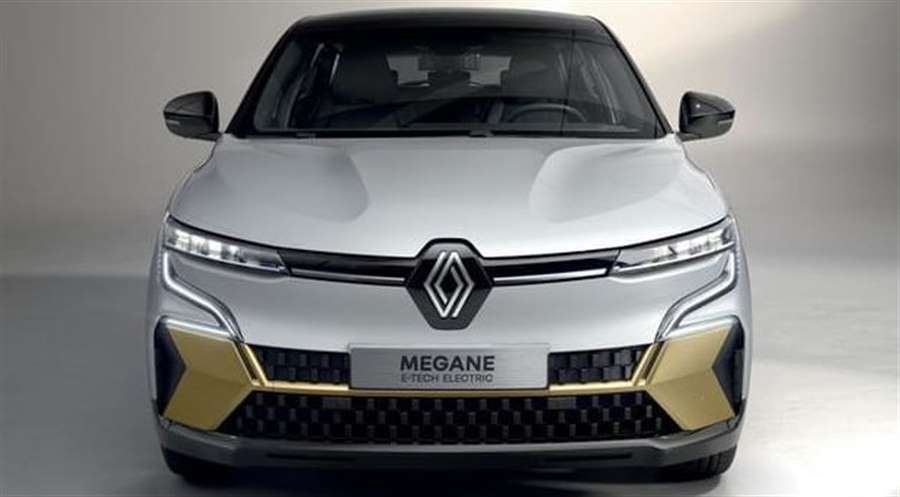
An earlier statement points out that the interior is characterized by the most advanced technology and state-of-the-art screens, as well as refreshed lines, space and materials in line with the new era of the automotive industry.
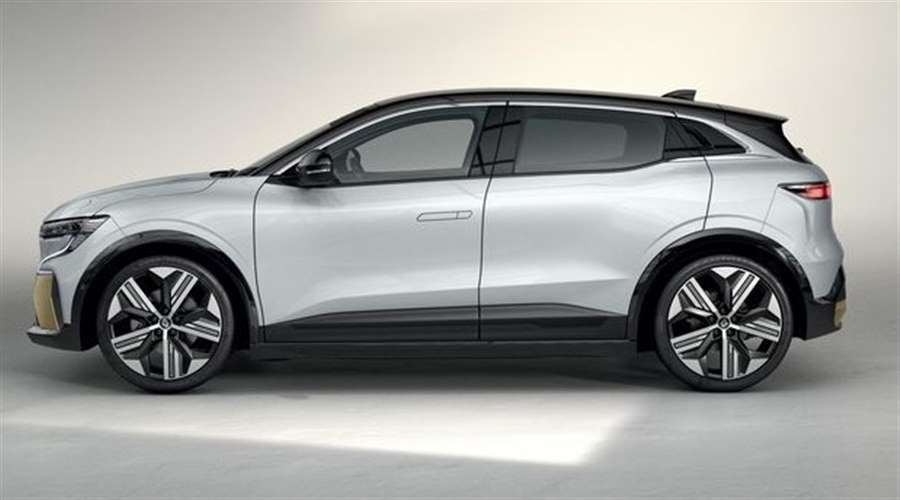
In addition, the interior offers more space thanks to a larger number of compartments for extra comfort and convenience.
The Megane E-Tech Electric is based on a modular CMF-EV platform developed for electric vehicles of the French-Japanese alliance, and it is a compact vehicle with which the French will compete with Volkswagen's electric model ID.3. The electric Megane also indicates its dimensions, since the length of the serial model will remain at the concept level (length 4210 mm, width 1800 mm, height 1505 mm, wheelbase 2700 mm).
An electric motor with 217HP and 300 Nm, 60 kWh batteries, front-wheel drive and autonomy of about 470 km are expected. Acceleration from 0 to 100 km / h is announced to take less than 8 seconds.
Also, a more affordable version with 40 kWh batteries is expected, and it is possible that a variant with higher capacity batteries and longer autonomy will appear later, as well as the one with two electric motors and all-wheel drive.
Production will take place at Renault’s Douai plant in France, along with the electric Renault 5 that was introduced even earlier.
Renault Arkana review
A well-priced and good-to-drive Coupe/SUV crossover
PROS
- Tidy handling and comfortable ride
- Practical and welcoming interior
- Good-value pricing
CONS
- Performance isn't exactly sparkling
- Dated-looking controls and screen
- If you want diesel, look elsewhere
Is the Renault Arkana any good?
This is the latest addition to the Renault range. It's a new SUV/coupe crossover – currently the biggest it offers in the UK – and it's a direct rival for the Parkers car of the year-winning Toyota C-HR as well as the innovative Citroen C4 and Mazda CX-30. We've driven a European-spec left-hand drive version for early impressions.
The Arkana is usefully on point right now – it's exclusively a hybrid, and comes in front-wheel drive form only. It's the first coupe-styled SUV from Renault, it arrives in the UK in late August, and is priced from £25,300, making it an affordable alternative to its bigger-selling rivals.
Most importantly, the Renault Arkana aims to offer a mix of style, practicality and refinement in a value-for-money package. The early signs are that it's a good-value and stylish car with appeal.
What's it like inside?
The cabin quality is intended to be premium. Certainly, Renault has massively upped its game in this area recently – the interiors of the current Clio and Captur are very modern, stylish and clever. Our test Arkana was a pre-production model, in not-quite UK spec, so it wouldn't be fair to pass comment on the details, but there's nothing radical or innovative going on with the cabin architecture.
There are a lot of physical switches, which dates the cabin, but for many people will actually be a boon, meaning you won't be over-using the touchscreen.
This is a stylish car, but also very much aimed at families, so it needs to look more coupe-like from the outside than it feels from the inside. And it does. The curve of the roof hasn't resulted in tiny windows for the rear passengers, and unlike the Toyota C-HR it's bright and airy in the back.
Rear passengers get slightly more width than those in the front. There are three seats in the back, although a full-grown adults wouldn't enjoy spending an extended time there. It's better to treat the Arkana as a four-seater, and use the wide, comfortable central armrest in the back. Rear legroom is adequate, and headroom will only be an issue for over-six-footers.
The rear seat splits 60:40, and folds flat to increase boot size from a decent 480 litres for the E-Tech hybrid (513 for the TCe mild hybrid) to a handy 1,263 (1,296), although the angle of the hatch will rule out boxier loads.
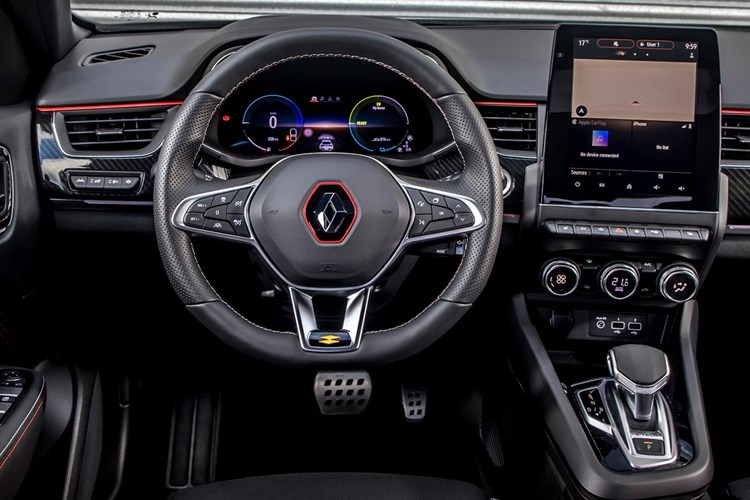
What's it like to drive?
A battery sits under the rear seats and powers an electric motor that's attached to the 1.6-litre petrol engine up front, supplemented by a starter-generator, much as you get in a mild hybrid. Between them they muster a total of 140hp, and it starts up in EV mode.
It sits on the same platform as the Clio and Captur, which are both excellent cars to drive. Increasing its size has not harmed the handling or ride quality one jot. It corners willingly and soaks up most bumps unobtrusively, helped by comfortable seats.
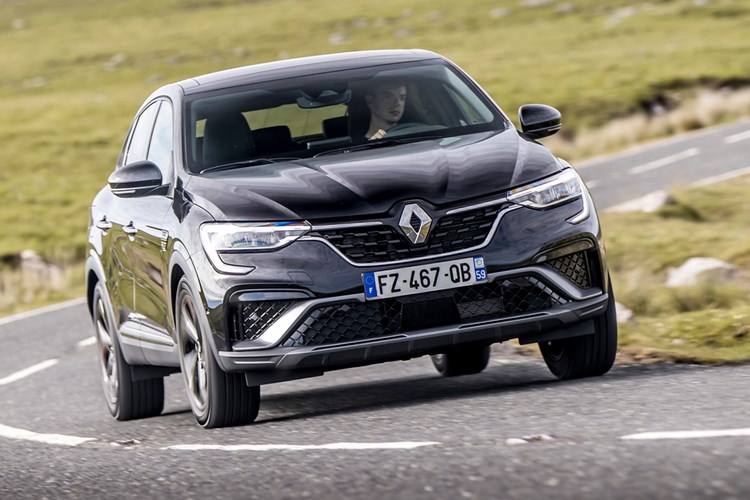
On all but entry-level models you get drive modes play with, but since Pure seems a little sluggish and Sport a bit sudden, you're best off sticking with Hybrid, which provides a responsive set-up and deploys whichever permutation of electric, petrol and mixed power sources is best for any given situation.
Don't be fooled by the RS Line trim, which is purely cosmetic. The on-paper figures are modest and correspond closely with the undramatic sensation of driving the Arkana.
The E-Tech's automatic transmission system doesn't have a manual shift option. Instead, it just gets on with delivering power to the front wheels without drawing attention to itself or requiring any driver input.
The other version, the TCe 140 mild hybrid, has only a small extra battery under the front seats, which can store surplus energy directed to it by the 12-volt starter-generator attached to the 1.3-litre petrol engine. It can't drive on electric power only – it's there to help the petrol engine and give smooth stop-start operation. It's the lighter and quicker of the two cars: 140hp, 9.8sec to 62mph and a top speed of 127mph.
What models and trims are available?
There are three spec levels, all available with either powertrain: Iconic, S Edition and RS Line. All look and feel like good value-for-money cars. The performance isn't going to get anyone excited, but if your priorities are style, practicality and a good smattering of convenience and comfort features, then you're looking in the right place.
Apple CarPlay and Android Auto connectivity is standard. All models get Active Emergency Braking System, Traffic Sign Recognition, Lane Departure Warning, Lane Keep Assist and cruise control. Lighting is all-LED. Options include an opening sunroof, leather upholstery, black roof and adaptive cruise control.
The middle-ranking S Edition has better infotainment than the entry-level Iconic, with the touchscreen up from 7.0 to 9.3 inches, bigger wheels – up from 17 to 18 inches – and various design changes. RS Line trim has different 18-inch wheels and more significant exterior changes, including a different front bumper and grille.
What else should I know?
The sleek shape isn't just about the looks. Renault says that the Arkana is about 25% more aerodynamic than a traditional SUV, which helps with economy and refinement.
Renault expects the E-Tech hybrid to be the big seller in the range. This system – as already seen on the Clio, Captur and Megane – uses energy-recovery know-how from the company's F1 team. The aim is seamless transition between electric, hybrid and petrol.
Renault Arkana verdict
Should you buy one?
The Renault Arkana might seem rather ordinary, even old-fashioned these days, considering the form is committed to launching 14 E-Tech hybrid and electric models by 2025. But looking at it in a more positive light, the Arkana is a proper car, adopting the SUV/coupe style that's a proven success for other car makers.
The Arkana uses tried-and-trusted technology that makes it capable and good to drive. More radical cars, with a higher degree of electrification, are available from Renault and elsewhere, if that's what you want, but for those who want a contemporary-looking car, and don't want to go electric, this is an appealing choice.
Right now, this is a smart, practical, enjoyable and decent-value new car that's going to be offered at an appealing cash price.
Revealed how much the new Renault 5 will cost
In its electrification strategy, Renault has announced seven new electric models by 2025, and among them will be two legendary cars in a modern edition, but with design connections of a glorious past. It is a Renault 4 model that will be named "4ever", but also a Renault 5 model that has been announced to be a third cheaper than the Zoe model.
At yesterday's eWays conference, where the French company presented its electrification plan, Renault Group CEO Luca de Meo spoke about the new platform, different batteries, but also about the new electric models that will be presented by 2025 and even their price.
The Renault 5 for the 21st century will be set on a new platform for B-segment electric vehicles that will enable the French company to produce affordable cars. The CMF-BEV platform will make the new Renault 5 33% cheaper than the Zoe model, which in practice means that the price is expected to be around 22,000 euros.
As for the modern Renault 5, we already have some ideas of what this legendary electric car might look like.
Namely, at the beginning of this year, photos of the Renault 5 Prototype concept were published, which clearly associates it with the model that was produced from 1972 to 1996. Renault 5 will be one of 14 new models that the French company will present in the next 4 years, and half of them will be fully electric.
The new batteries will be based on nickel, manganese and cobalt and will significantly reduce costs per kilowatt-hour. A range with a single charge of about 400 km according to the WLTP standard is expected.
"I know from experience that reviving cult products from the past can significantly contribute to brand growth. Renault 5 is a cult vehicle that will be available in a modern edition at a price that is acceptable to many. This is just the beginning for the entire Renault brand, "said Luca de Meo, who was the key man for the return of the Fiat 500 in a modern edition.
In addition to Renault 5, an electric Renault 4 called "4ever" has also been announced.
Renault Arkana review
A well-priced and good-to-drive Coupe/SUV crossover
Is the Renault Arkana any good?
This is the latest addition to the Renault range. It's a new SUV/coupe crossover – currently the biggest it offers in the UK – and it's a direct rival for the Parkers car of the year-winning Toyota C-HR as well as the innovative Citroen C4 and Mazda CX-30. We've driven a European-spec left-hand drive version for early impressions.
The Arkana is usefully on point right now – it's exclusively a hybrid, and comes in front-wheel drive form only. It's the first coupe-styled SUV from Renault, it arrives in the UK in late August, and is priced from £25,300, making it an affordable alternative to its bigger-selling rivals.
Most importantly, the Renault Arkana aims to offer a mix of style, practicality and refinement in a value-for-money package. The early signs are that it's a good-value and stylish car with appeal.
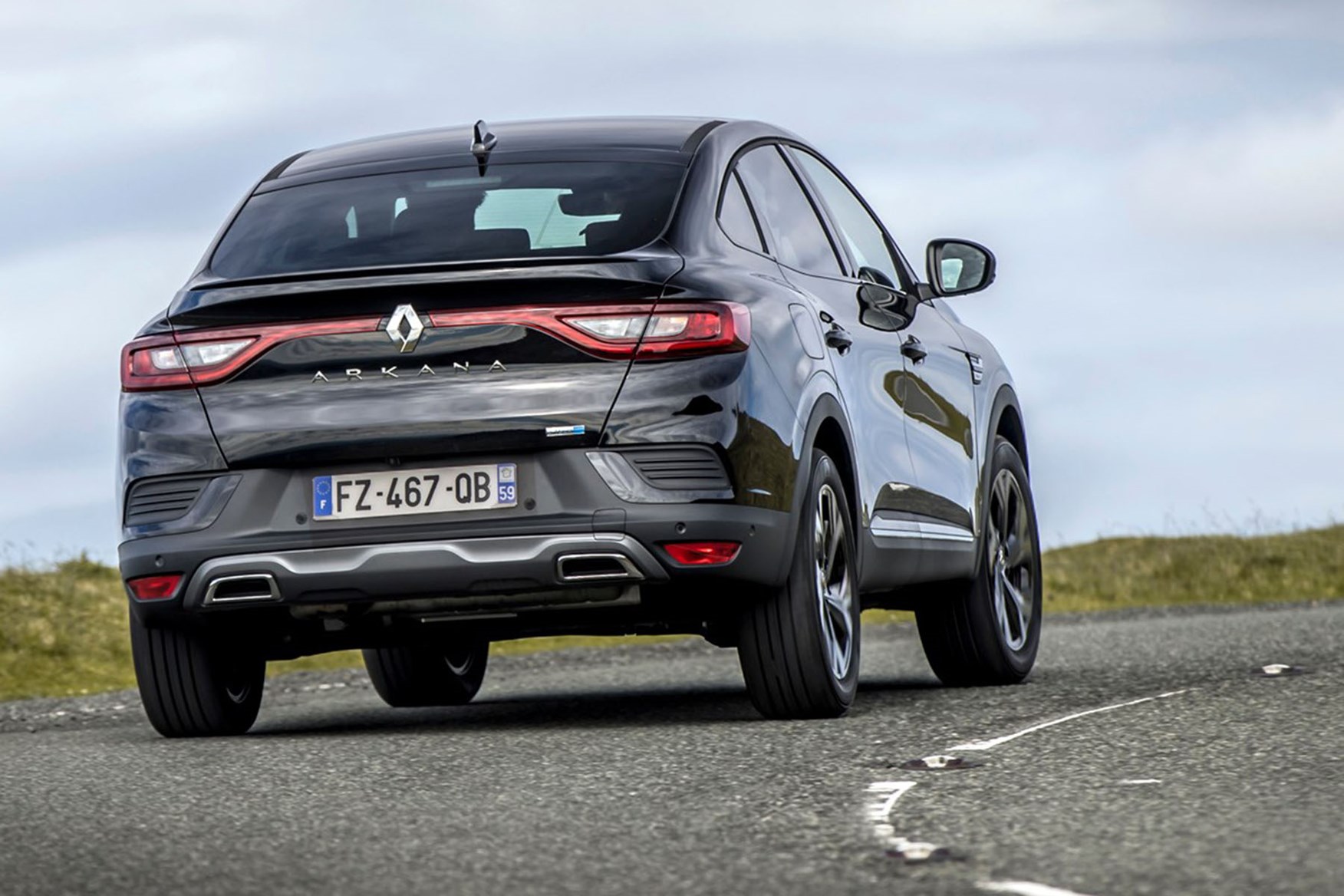
What's it like inside?
The cabin quality is intended to be premium. Certainly, Renault has massively upped its game in this area recently – the interiors of the current Clio and Captur are very modern, stylish and clever. Our test Arkana was a pre-production model, in not-quite UK spec, so it wouldn't be fair to pass comment on the details, but there's nothing radical or innovative going on with the cabin architecture.
There are a lot of physical switches, which dates the cabin, but for many people will actually be a boon, meaning you won't be over-using the touchscreen.
This is a stylish car, but also very much aimed at families, so it needs to look more coupe-like from the outside than it feels from the inside. And it does. The curve of the roof hasn't resulted in tiny windows for the rear passengers, and unlike the Toyota C-HR it's bright and airy in the back.
Rear passengers get slightly more width than those in the front. There are three seats in the back, although a full-grown adults wouldn't enjoy spending an extended time there. It's better to treat the Arkana as a four-seater, and use the wide, comfortable central armrest in the back. Rear legroom is adequate, and headroom will only be an issue for over-six-footers.
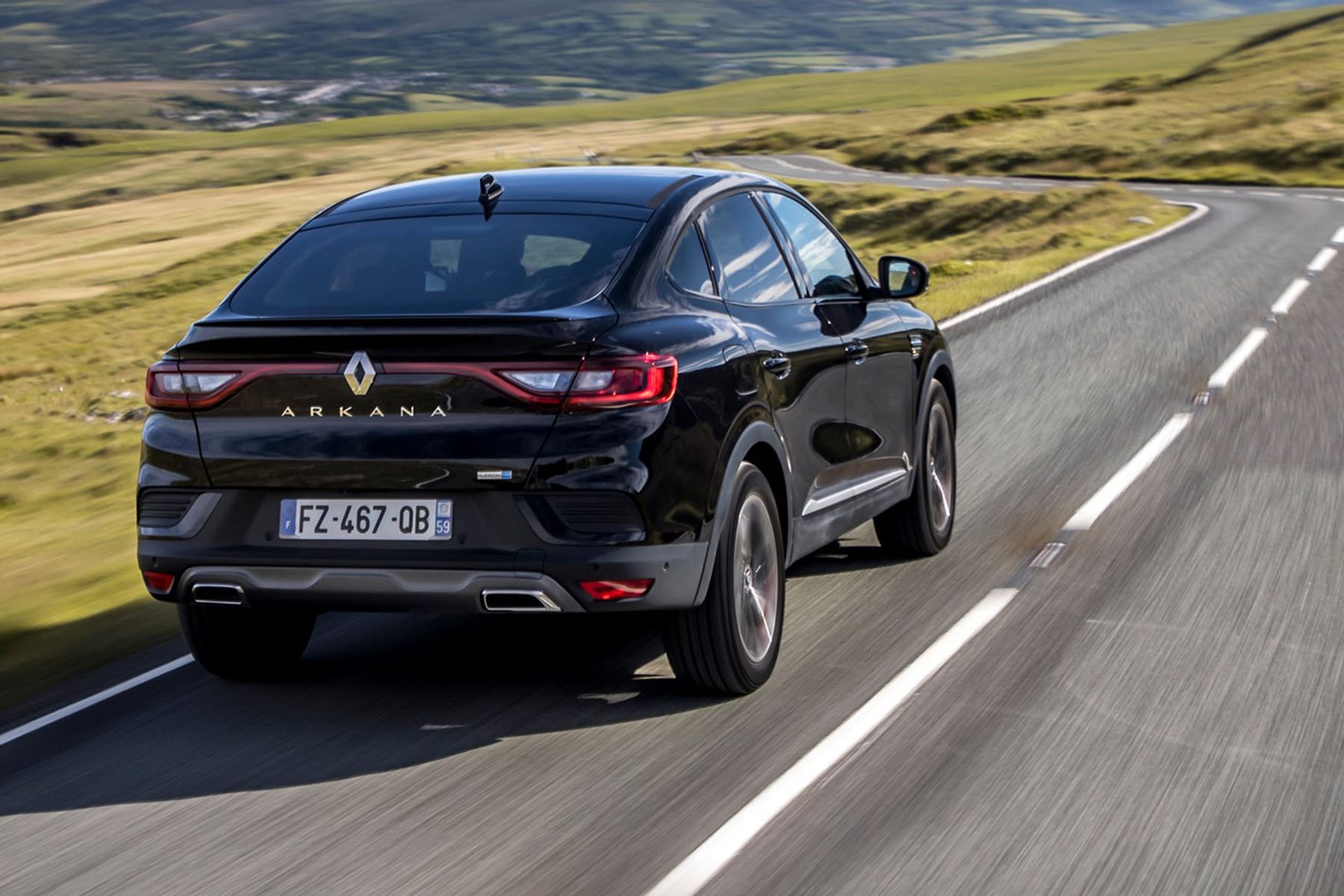
The rear seat splits 60:40, and folds flat to increase boot size from a decent 480 litres for the E-Tech hybrid (513 for the TCe mild hybrid) to a handy 1,263 (1,296), although the angle of the hatch will rule out boxier loads.
What's it like to drive?
The Arkana's performance won't set the world on fire, but it's very smooth and refined, which is what you're looking for from a hybrid. Acceleration is leisurely, with a 0-62mph time of 10.8 seconds, while the 108mph maximum speed is more than enough for a family car in this class.
A battery sits under the rear seats and powers an electric motor that's attached to the 1.6-litre petrol engine up front, supplemented by a starter-generator, much as you get in a mild hybrid. Between them they muster a total of 140hp, and it starts up in EV mode.
It sits on the same platform as the Clio and Captur, which are both excellent cars to drive. Increasing its size has not harmed the handling or ride quality one jot. It corners willingly and soaks up most bumps unobtrusively, helped by comfortable seats.
On all but entry-level models you get drive modes play with, but since Pure seems a little sluggish and Sport a bit sudden, you're best off sticking with Hybrid, which provides a responsive set-up and deploys whichever permutation of electric, petrol and mixed power sources is best for any given situation.

Don't be fooled by the RS Line trim, which is purely cosmetic. The on-paper figures are modest and correspond closely with the undramatic sensation of driving the Arkana.
The E-Tech's automatic transmission system doesn't have a manual shift option. Instead, it just gets on with delivering power to the front wheels without drawing attention to itself or requiring any driver input.
The other version, the TCe 140 mild hybrid, has only a small extra battery under the front seats, which can store surplus energy directed to it by the 12-volt starter-generator attached to the 1.3-litre petrol engine. It can't drive on electric power only – it's there to help the petrol engine and give smooth stop-start operation. It's the lighter and quicker of the two cars: 140hp, 9.8sec to 62mph and a top speed of 127mph.
What models and trims are available?
There are three spec levels, all available with either powertrain: Iconic, S Edition and RS Line. All look and feel like good value-for-money cars. The performance isn't going to get anyone excited, but if your priorities are style, practicality and a good smattering of convenience and comfort features, then you're looking in the right place.
Apple CarPlay and Android Auto connectivity is standard. All models get Active Emergency Braking System, Traffic Sign Recognition, Lane Departure Warning, Lane Keep Assist and cruise control. Lighting is all-LED. Options include an opening sunroof, leather upholstery, black roof and adaptive cruise control.
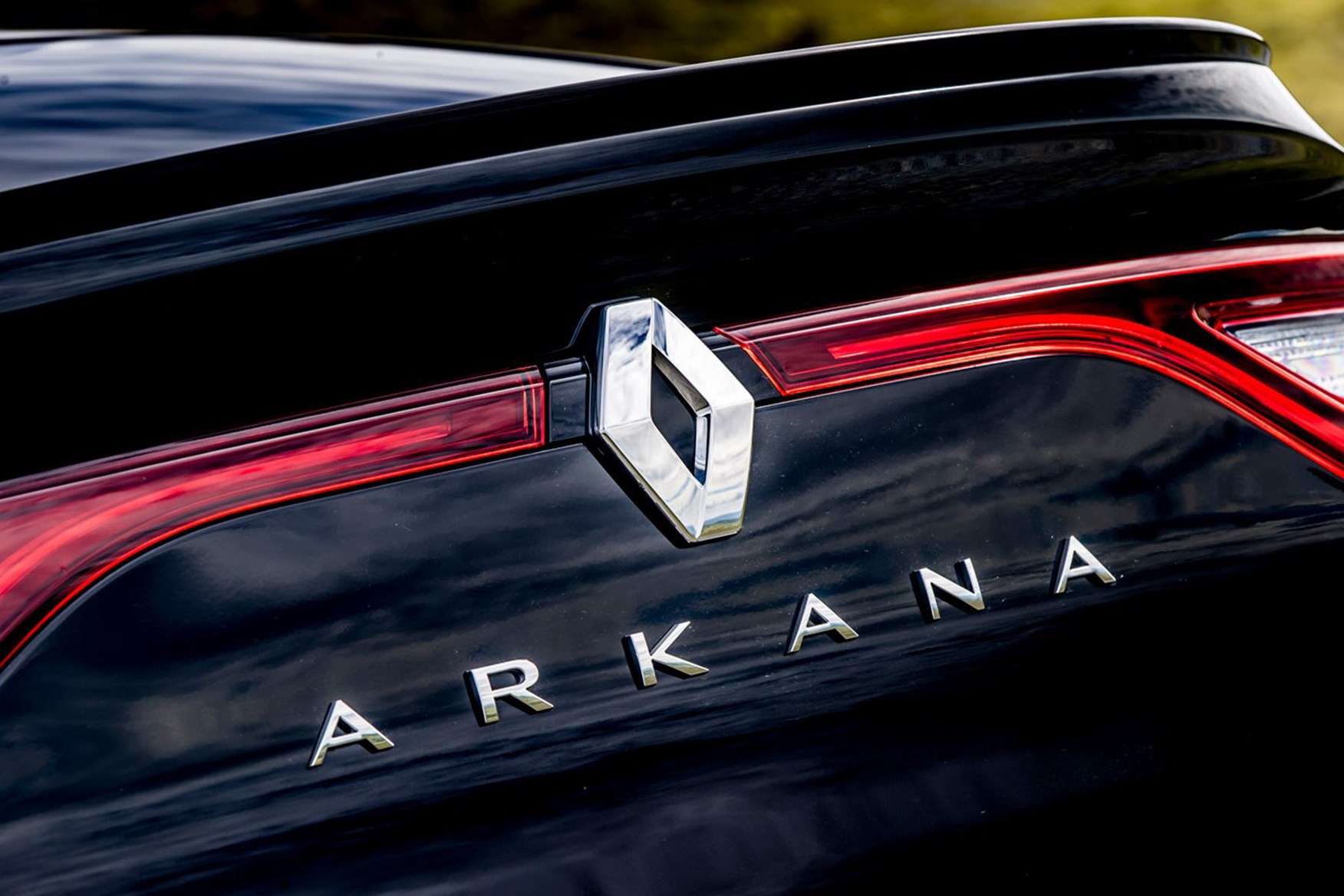
The middle-ranking S Edition has better infotainment than the entry-level Iconic, with the touchscreen up from 7.0 to 9.3 inches, bigger wheels – up from 17 to 18 inches – and various design changes. RS Line trim has different 18-inch wheels and more significant exterior changes, including a different front bumper and grille.
What else should I know?
The sleek shape isn't just about the looks. Renault says that the Arkana is about 25% more aerodynamic than a traditional SUV, which helps with economy and refinement.
Renault expects the E-Tech hybrid to be the big seller in the range. This system – as already seen on the Clio, Captur and Megane – uses energy-recovery know-how from the company's F1 team. The aim is seamless transition between electric, hybrid and petrol.
Renault Arkana verdict
Should you buy one?
The Renault Arkana might seem rather ordinary, even old-fashioned these days, considering the form is committed to launching 14 E-Tech hybrid and electric models by 2025. But looking at it in a more positive light, the Arkana is a proper car, adopting the SUV/coupe style that's a proven success for other car makers.
The Arkana uses tried-and-trusted technology that makes it capable and good to drive. More radical cars, with a higher degree of electrification, are available from Renault and elsewhere, if that's what you want, but for those who want a contemporary-looking car, and don't want to go electric, this is an appealing choice.
Right now, this is a smart, practical, enjoyable and decent-value new car that's going to be offered at an appealing cash price.
(parkers.co.uk)
A radical change: The new Renault Megane is an electric crossover
We were told a few months ago that we can forget about the Renault Megane as we knew it so far. However, the new generation of the once popular hatchback still wants to maintain the tradition, but only in one thing - to remain in demand. And as trends have changed, it can only do so if it becomes a crossover and an electric one. So, goodbye for the hatchback and SUS engines, these are the official photos of the Megane prototype. However, it is still under camouflage because the premiere is awaited, and the start of production of the serial version will be in 2022.
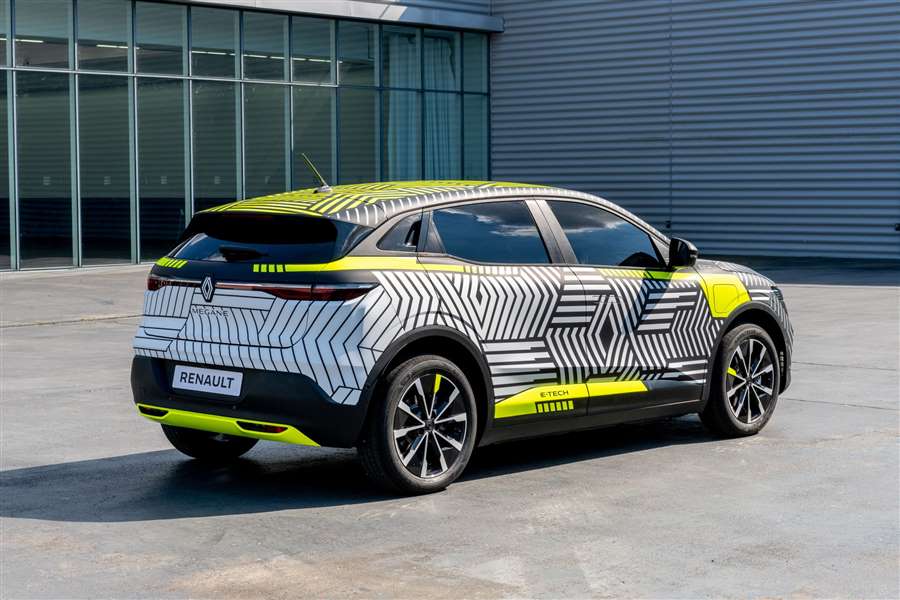
The French manufacturer showed us a prototype of the new Megane. The cunning plan to use the name Megane for a model that has nothing to do with the previous one, was coined just to help the new crossover establish some connection with previous Renault cars.
This is a pre-production model that is still camouflaged, but you can clearly see the form of the crossover, which will be the first in the alliance to use the CMF-EV platform, writes Index.hr. It is the same base used by the electric Nissan Ariya.
Renault is not revealing much data for now, but it is announcing that MeganE will have an electric motor with a power of 217 hp and a battery with a capacity of 60 kWh, which will provide a range of 450 km.
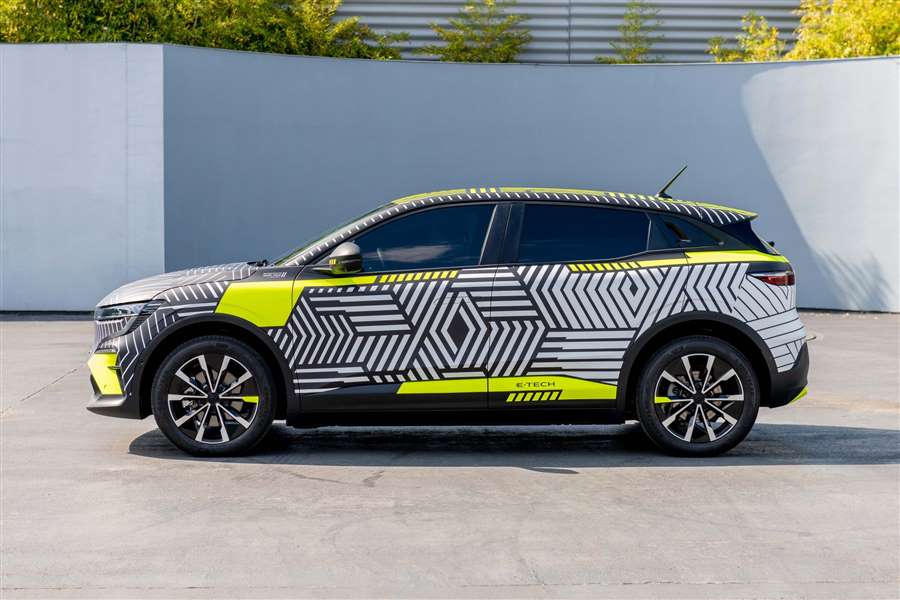
It is not yet known whether, like Ariya, they will get a version with two electric motors that has over 300 hp, but also a 87 kWh battery. Judging by what the rivals offer, it should offer such a variant as well.
In any case, the first 30 camouflaged copies Renault will release on European roads this summer.
The new model will be produced in French plants (Douai), starting next year.
What's new: By 2030, Renault will be the "greenest brand"
Renault is launching a new chapter dedicated to the modernization of the European car industry. At the online presentation, the head of the company Luca de Meo pointed out that out of 10 sold models, nine will have an electrified drive. Renaulution, as a strategic plan of the French company, includes a mix of hybrid and electric models. Seven e-models of the C and D segments will be presented by 2025, and the company's first coupe-crossover - Mégane Conquest marks the beginning of the sales offensive and will arrive in Serbia in June.
In the transition to the automotive industry, Renault intends to become the greenest brand in Europe by 2030, with 9 out of 10 cars sold being electrified models. In the field of technology and services, ie the project "Software Republique" will shape the future of urban mobility. More than 2,000 engineers from five leading companies in the industry will combine their knowledge in the fields of cybersecurity, artificial intelligence, data processing, software and microelectronics to create mobility solutions tailored to cities and local communities.
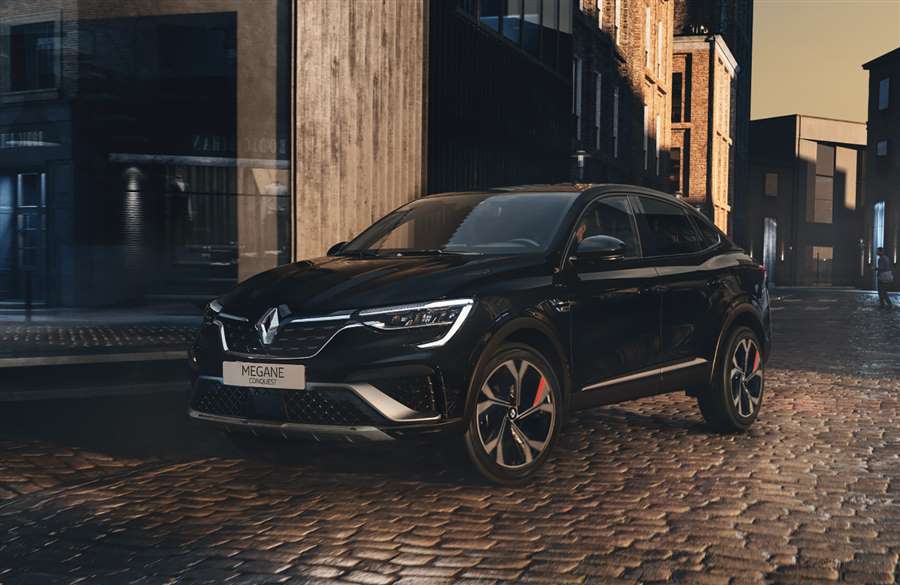
In addition, there is the Renault Re-Factory - Europe's first factory dedicated to the circular economy - marking the brand's turn towards a more sustainable and responsible business model with a total of 120,000 recycled or repurposed vehicles (including electric vehicles) per year. Almost 80% of the strategically recycled material will be reused in the new batteries. When it comes to the percentage of the use of recycled materials in new vehicles, Renault intends to take the first place by 2030.
The brand will conquer more segments with its "cars for life". Seven electrified C and D segment models will be introduced by 2025. The Mégane Conquest marks the beginning of a sales offensive.
The new generation Mégane E-Tech Electric, which will be an electric crossover, heralding the future of connected and fully electric vehicles, will also be introduced in the near future. Find out more about the new Megan here.
Finally, the E-Tech hybrid technology will experience further improvements in future models from segments C and D, primarily in terms of efficiency and fun driving characteristics. For now, in addition to the recently introduced Mégane Conquest, Captur E-Tech hybrid and Mégane E-Tech Plug-in hybrid, Renault has a total of six hybrid and plug-in hybrid vehicles.
With more than 10 years of expertise and almost 400,000 vehicles sold, Renault holds a leading position in the European electric vehicle market. Thanks to the experience in Formula 1, the brand has developed more than 150 patents that make hybrid technology efficient, fun to drive, with low CO2 emissions and low fuel consumption. This technology was introduced last year in three most important models: the Clio E-Tech hybrid, the Captur and the Megane Grandtour E-Tech Plug-in hybrids.
In the higher segments, especially the C-SUV segment, a new 1.2-liter three-cylinder engine combined with an electric motor will be introduced, with 200 hp for the hybrid version (2022) and 280 hp for the plug-in hybrid variant with all-wheel drive. (2024)
The first coupe-crossover with the Renault logo
It is the first C-SUV coupe to come with petrol TCe 140 and TCe 160 engines with 12 V microhybrid technology.
There is also a 145 hp hybrid engine that allows up to 80% of city driving on a fully electric drive.



